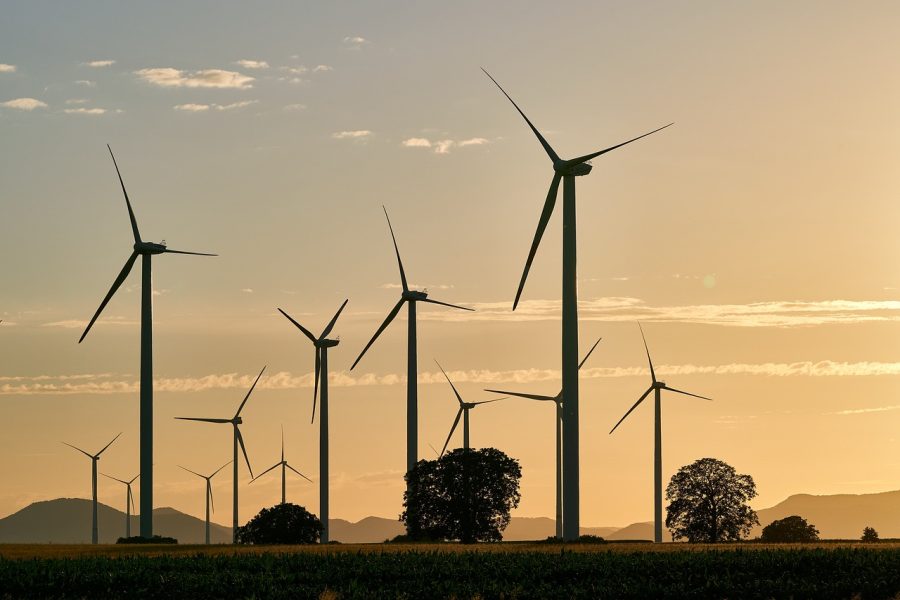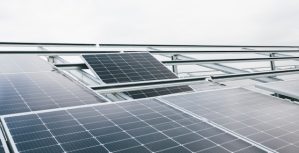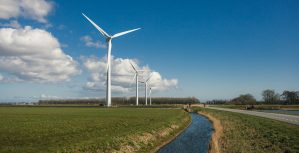What Are the Latest Renewable Energy Trends?
So, what are the latest renewable energy trends? We take a look below at the green trends that may change the world.
• Green Hydrogen Energy
Hydrogen is a highly abundant material that produces just about zero greenhouse gas emissions when you burn it. These two qualities make it one of the most exciting potential energy sources. However, in previous years it was found to be difficult to convert hydrogen into a fuel source since it involved consuming fossil fuels, which means the process created carbon emissions. Hydrogen that is grey is sourced from natural gas, while brown hydrogen is sourced from coal.
On the other hand, green carbon is produced through processes that involve water and electrolysis to generate the required amounts of electricity from a renewable source such as solar power or wind, which can effectively make these processes carbon-free. This year, several major European companies like RWE and Shell have made commitments toward creating a green hydrogen major pipeline (the first of its kind) from the offshore wind plants in not only the North Sea but also throughout Europe.
Even though this project will only be completed in 2035, the European Union has also committed to projects that are smaller and aimed at creating 40GW of “renewable power” so that it can be utilized for “green hydrogen” generation by the year 2030. This ultimately means we should expect an increase in projects and innovation with this type of fuel source over the next few years making it one of the emerging renewable energy trends. One of the examples includes the first-ever hydrogen-powered e-bike that was created by Studio MOM (Dutch designers), GES and LAVO an Australian hydrogen-fuel startup. Another example includes at-home electric-vehicle charging solutions that use hydrogen fuel, which was created by a US startup.
• ElektrikGreen
The IoT (Internet of Things) area has concerns about the distribution and generation of power. IoE is tied closely to an energy decentralization idea, which means moving closer to a power infrastructure that is more sustainable where energy will be utilized as close as possible when it comes to the place and time where it was created.
This latest energy infrastructure paradigm will involve dramatic automation levels to manage upcoming technology platforms and the required financial framework by the different markets in order to properly facilitate energy distribution and trading. Artificial Intelligence (AI) is going to play a massive role here along with other emerging technology trends like blockchain that will enable secure and transparent records of payments and trades. Similar to IoT, IoE involves cloud and edge architecture, with scanners, and sensors that both process information as close to the source as possible (at a point where the power is used or generated) and via the remote-data centers. This is a technology layer that is going to make it very possible for the utility businesses to conduct data-driven, real-time predictive maintenance and decision-making to drive and enhance efficiency, while at the same time improving customer satisfaction and experience.
• Advanced Engineering For Renewables
Technology that is used for generating renewable energy has undergone constant improvements due to the massive pressure placed on generating power in a safer, more efficient, and more economical way. In 2022, we are going to see even further advancements when it comes to engineering, which will bring us more adaptable and powerful photovoltaic panels that are used for solar-power generation as well as the turbine blades that are used in wind and hydro power generation. Helicoid, a US startup created blades that use structural fibers which is a novel arrangement for creating turbines that happen to be much stronger and a lot more resistant to the damages caused by environmental erosion, and they are also less impacted by factors such as structural fatigue. This has improved their efficiency since they are less affected when it comes to downtime and require less frequent repair and replacement.
When it comes to solar, businesses like Dutch startup Lusoco, have started finding new methods to engineer photovoltaic panels with the use of different refracting and reflecting materials such as fluorescent ink. This concentrates the light onto solar cells which leads to more efficient energy harvesting. It has also resulted in cheaper and lighter panels that are less labor-intensive to install and produce. There are also new materials that are under investigation that manage to convert energy in a more effective way. Some of these include monocrystalline-silicon ingots that are made by Norwegian Crystals, produced through an extremely low-carbon hydropower process. Improvements to various engineering processes are going to be one of the strong trends that drives reliability and efficiency throughout the sector of renewable energy in 2022.
• Bioenergy
The energy that is derived from biofuel or biomass could potentially generate a lot more power than what we as humans use today. In the last few years, there has been a lot of emphases placed on unlocking this potential. Chemical, biological, and thermal processes have been tested to create fuel that is more efficient from biological waste such as crops like coconut shells, sugarcane, wood, and various other waste materials. These processes include fermentation in order to create biodiesel and bioethanol.
Even though the “renewable” classification is still regarded as controversial, the International Energy Agency has predicted that bioenergy is going to account for 30% of the production of renewable energy by 2023. It is regarded by the IPCC (Intergovernmental Panel on Climate Change) to be essential in the plans to reduce global warming in this century by 1.5°C.
The year 2022 will also see increases in the projects that are focused on innovative ways to convert biological matter or waste into energy, along with practical applications relating to that energy. Brewer Heineken has already revealed its plans on how it plans to provide power to a production site located in Phnom Penh, Cambodia, from rice husk waste produced by the local farmers. Baltic Sea Action Group is also leading a project in 2022 that involves converting sewage waste that is discharged from the cargo ships into biogas fuel. This fuel can then be used within the transport sector. BeFC, a French startup has designed paper-biofuel cells which work on converting oxygen and glucose into electricity for the purpose of creating new types of recyclable, eco-friendly, and non-toxic batteries that can be used in lower-power applications like IoT transmitters and sensors.
Share It on :





